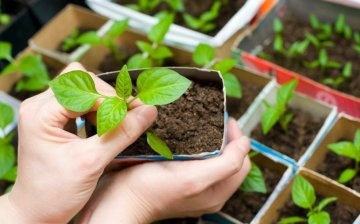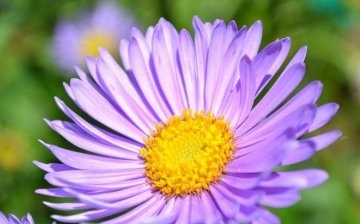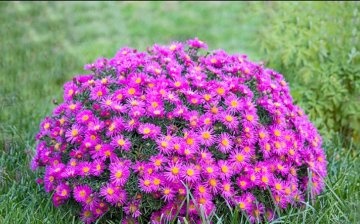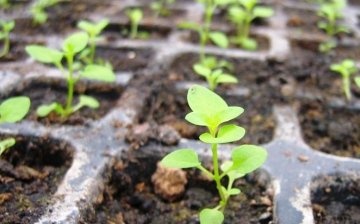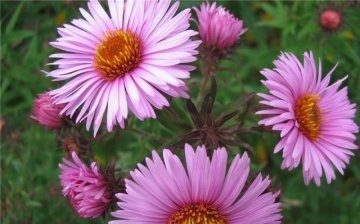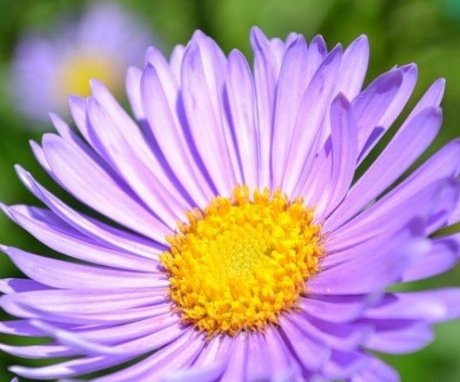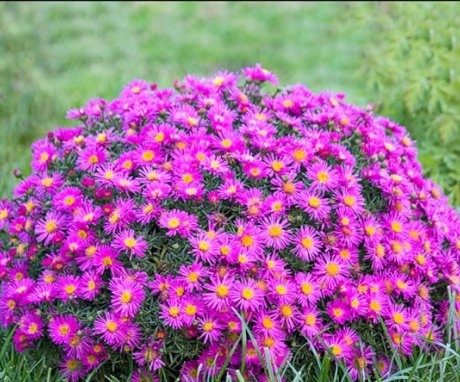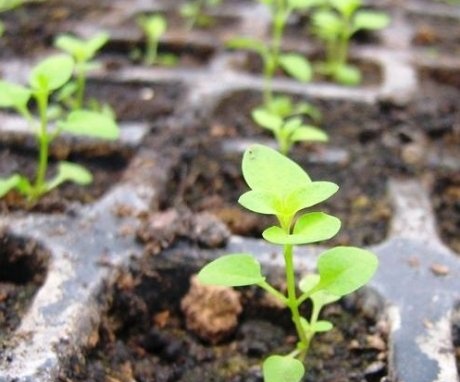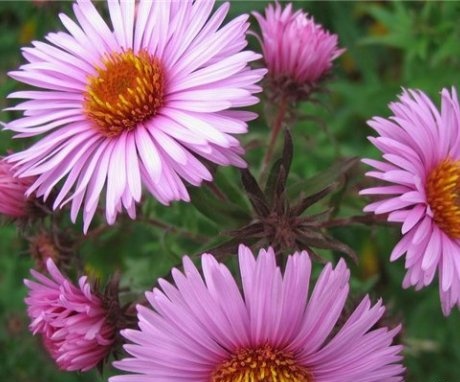Growing alpine asters from seeds and the necessary conditions for flowers
Alpine aster is one of the most unusual representatives of the family aster... It belongs to the perennial species, it is a beautiful and at the same time modest flower, in appearance most of all resembling a large chamomile... It attracts gardeners with a variety of shades: the petals can be lilac pink white, crimson, etc.
Alpine aster is a rather unpretentious plant, it can be grown on your own plot from seeds with little labor.
Content:
- General description of the species
- Alpine aster growing rules
- Growing from seeds
- Preparing for winter
General description of the species
Growing alpine asters is interesting for the gardener for many reasons. Unlike many other species, it begins to bloom very early: the first buds can appear as early as late May or early June. Bloom lasts about 1 month, the diameter of each flower reaches 5 cm. The type of flower is a basket, like that of a chamomile. Outwardly, this is not too catchy, but a very beautiful plant that can become a real decoration of the garden.
Alpine aster looks good if planted in groups, in addition, it can be planted as a border or used to decorate rockeries and brighter and more multicolored flower bed.
The total height of the alpine aster bush is no more than 30 cm, so it can be used to frame other decorative elements.
Although alpine aster originally appeared in the mountains, today it grows throughout the European continent, this plant is undemanding to care for and can grow well in a variety of conditions.
Alpine aster growing rules
It is not difficult to provide good conditions for growing alpine asters; this plant is perfect even for inexperienced flower growers. it perennial, which can grow in one place for 5 years or more.
- This requires proper placement of it on the site: it is better to choose a well-lit place for it, although it also feels good when located in partial shade.
To obtain beautiful flowers, it is advisable to comply with a few more requirements. cultivation:
- For alpine asters, it is necessary to prepare well-drained soil. This plant does not like excess moisture and constant stagnation of water, this can lead to decay of the roots. Because of this, loamy soil is more suitable for her, which before planting seed or seedlings must be carefully dug up.
- This type of aster does not have special requirements for the acidity of the soil, however, it is desirable that the soil be saturated with calcium and enriched with other trace elements necessary for growth.
- Bushes usually grown in one place for no more than 3-4 years in a row. Otherwise, they will grow strongly, and this will negatively affect flowering... The maximum growing period in one area is 5 years, after which the bush can be divided into several parts with a shovel and planted in different parts of the site.
- Experienced gardeners do not contribute fertilizers the first year after transplanting and dividing the bush. This will lead to accelerated growth of the leaves, while the aster will bloom worse.
These are just general tips for growing alpine asters.If you want to plant this plant on the site, you need to think over the location of the rest flower beds.
Aster is beautiful in itself, but it looks especially interesting as a frame for brighter colors, and it can be made an important part of a decorative composition. You can experiment by planting rows of flowers with different shades of buds on the same flower bed: aster blooms together and allows you to create interesting color combinations.
Growing from seeds
Growing asters from seeds is a common breeding method that allows you to experiment with breeding work and develop new additional varieties. However, seeds are rarely planted right away. in open ground: in the natural environment, it is impossible to create ideal conditions for growth, and because of this, the germination of seeds is impaired. In addition, if you choose early flowering varieties for the garden, they need time to grow.
Planting alpine asters to get a friendly flowering is carried out as follows:
- Seed material is planted at the end of March or in the first week of April in prepared seed boxes. Can also be planted the seeds in a greenhouse protected from cold air.
- Seeds germinate if the temperature does not drop below +20 degrees. However, in the future, for full growth, she needs a lower temperature, not exceeding + 15-18 degrees. If it is too warm, the shoots will stretch too quickly and they will be thinner and weaker.
- When the plants acquire 3-4 true leaves, they can be dive in separate pots, and at the beginning of May transplant into open ground. Plants are gradually accustomed to planting in a permanent place: you must first periodically take the pots out to the balcony or outside for a few minutes, and then gradually increase the period of stay in the open air.
- For the first time after disembarkation, a daily wateringIt is better to water the plants with water at room temperature in the morning. At the same time, moisture should not stagnate in the soil, the soil should remain loose. The water should not be cold, this negatively affects the condition root system.
- Alpine aster blooms, as a rule, in the second year after planting, in the first year it should gain green mass and get stronger. For the first feeding use infusion mullein, it is brought in twice during the summer season. In autumn, the aster prepares for the long winter, and at this time it does not need an excess of minerals. It is enough to add a small amount of ash to the soil.
Preparing for winter
The soil does not need to be left bare before the winter season. A layer of mulch from sawdust or leaves. Usually, the green part of the plants does not dry out, but goes for the winter. If the stems and leaves have dried up, they need to be cut off so that in the spring the bush begins to grow with renewed vigor. It is not required to cover the bush additionally: the alpine aster is quite adapted even to rather severe cold weather, so it feels comfortable in the middle climatic zone and in the Urals.
If you live in the northern regions, to protect the buds of plants from severe frosts, the base of the bush can be covered with sand for the winter period. This will make it possible to prevent the freezing of the buds, and with the beginning of spring they will give new young shoots.
With the onset of spring, it is necessary to remove the melted snow around the bushes so that moisture does not stagnate in the root system.
This can not only damage the roots, but also lead to rotting of young shoots, excess moisture during this period is destructive. Alpine aster is practically not afraid of pests and diseases. One of the few biological threats - powdery mildew: It affects plants planted in shaded areas with excess moisture in the soil. To treat the bush, it must be transplanted to a sunny place and treated with a phytopreparation.For example, phytosporin can be used to combat powdery mildew.
Alpine aster is a beautiful and unpretentious plant that will look great in your garden. It will be very easy to grow it, and planting with seeds will allow you to try yourself as a breeder. Using your own seed allows you to experiment with the color of the buds and get plants with unusual colors.
More information can be found in the video.



